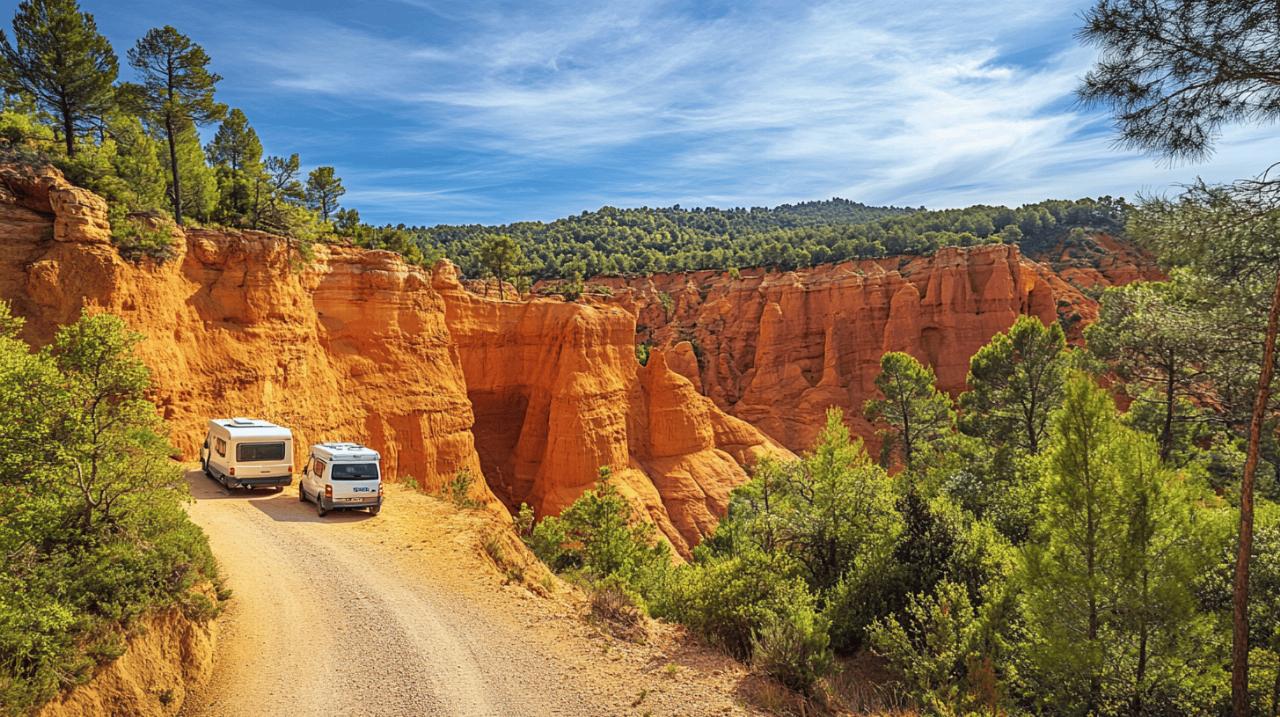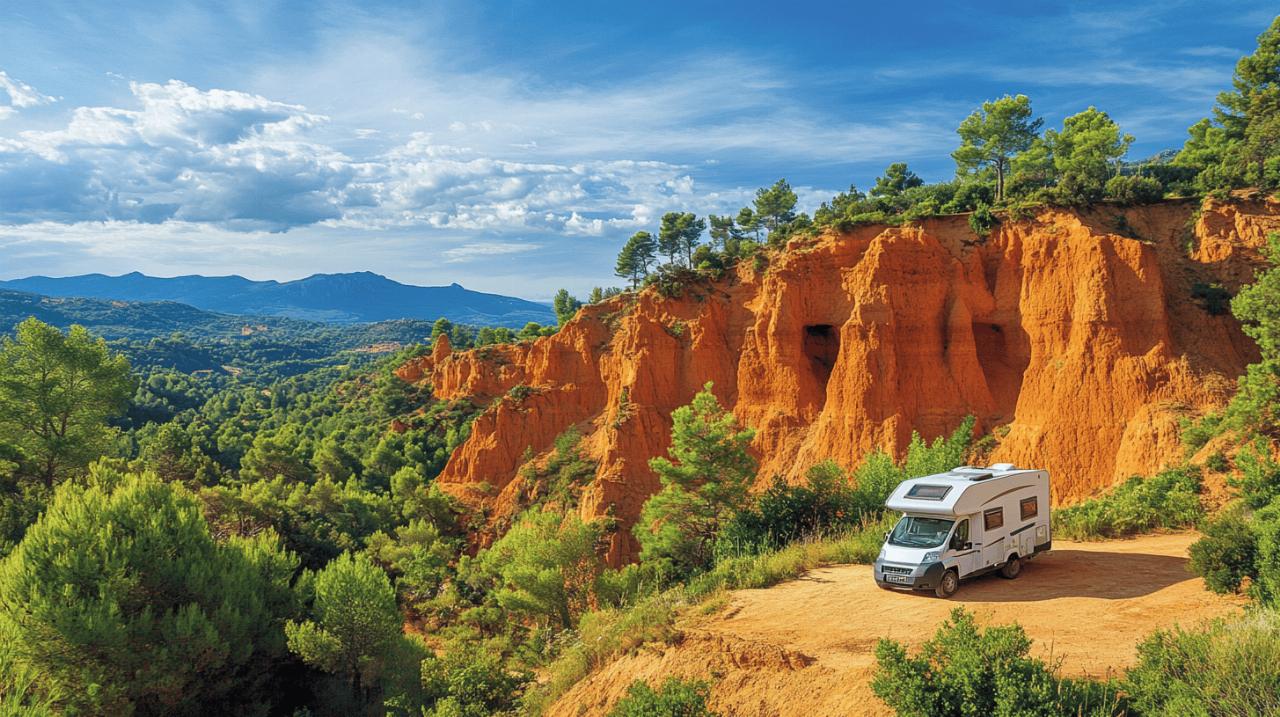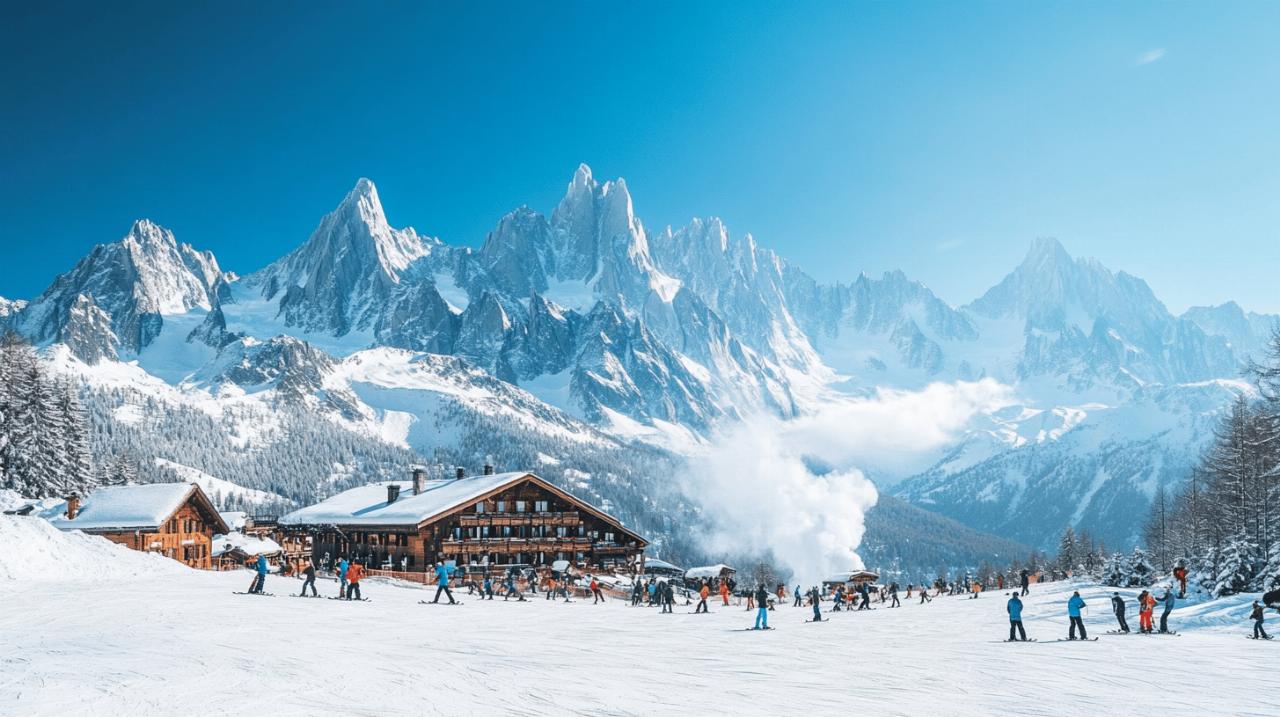Exploring the Ochre Trail of Roussillon and Colorado Provençal by Campervan: Where to Stop for Authentic Provençal Cuisine Along the Way
Cultural Stops and Artisan Experiences Along the Ochre Route
Whilst the ochre cliffs and vibrant landscapes are undoubtedly the main draw, the route between Roussillon and the Colorado Provençal offers far more than just geological wonders. This region of the Luberon is steeped in history and local craft, with several fascinating cultural stops that provide a deeper understanding of the ochre heritage and Provençal artisan traditions. Taking the time to explore these spots transforms your campervan journey from a simple scenic drive into a proper cultural sortie, revealing the stories behind those stunning colours and the people who've shaped this remarkable landscape.
Between exploring the sentier des ocres and marvelling at the cheminées de fées, consider dedicating time to visit these enriching cultural experiences. They're perfect for breaking up your walking routes and offer a brilliant opportunity to learn about the region's artistic soul. Many of these attractions are within easy reach of your motorhome parking facilities, making them ideal stops whether you're based near Roussillon, exploring Gargas, or camping closer to Rustrel.
Visiting the Conservatoire des Ochres and Bruoux Mines in Gargas
Just a short hop from Roussillon—about 1.7 kilometres down the road—you'll find the Conservatoire des Ochres et de la Couleur, an absolute must for anyone keen to understand the fascinating history behind those striking ochre cliffs. This former ochre factory has been brilliantly converted into a museum and educational centre, where you can learn all about the extraction, processing, and use of these natural pigments that once made this region a world centre for ochre production. The Conservatoire offers guided tours that take you through the old factory buildings, explaining how the ochre quarry operations worked and showcasing the incredible range of colours—from pale yellows to deep reds—that can be produced from the iron oxide deposits in the Vaucluse soil.
What makes this visit particularly special is the hands-on approach. You can actually see artisans at work, demonstrating traditional techniques for creating pigments and paints, and there are workshops available where you can have a go yourself. It's a proper authentic experience that connects you directly to the Provençal heritage of the area. The site also features beautiful walking trails through the old quarry landscapes, offering panoramic views across the Luberon and giving you a sense of the scale of the historic ochre industry.
Push on a bit further to Gargas, about 7 kilometres east of Roussillon, and you'll discover the Mines de Bruoux, another fascinating ochre site with a rather different character. These underground ochre mines are a remarkable feat of engineering, with vast cathedral-like chambers carved out of the earth over centuries of extraction. Guided tours take you deep into the cool, dimly lit galleries—a welcome respite if you're visiting during the warmer months—where you can admire the striations of colour in the walls and learn about the lives of the miners who worked in these conditions. The mines maintain a constant temperature year-round, making them an excellent sortie regardless of the weather outside. Both sites offer ample parking for campervans, and the combination of the Conservatoire and Bruoux mines provides a comprehensive understanding of how ochre shaped this region's economy and identity for generations.
Art Galleries and Thursday Market Treasures in Roussillon and Apt
Beyond its geological attractions, Roussillon has cultivated a thriving artistic community, drawn naturally enough by the extraordinary light and colours of the landscape. As you wander through the narrow, winding alleys of this picture-postcard village, you'll stumble upon numerous art galleries showcasing work by local painters, sculptors, and craftspeople. Many of these artists are inspired directly by the ochre cliffs and Provençal architecture that surround them, creating pieces that capture the essence of the Luberon in oils, watercolours, and mixed media. The galleries are typically small, intimate affairs where you can chat with the artists themselves or knowledgeable gallery owners who are passionate about promoting local talent.
The artistic heritage here isn't just contemporary, either. Roussillon has fascinating literary connections that add another layer to its cultural appeal. Samuel Beckett, the renowned Irish playwright, lived here during the Second World War, seeking refuge from occupied Paris. Later, in the early 1950s, American anthropologist Laurence Wylie made Roussillon his home and wrote extensively about village life in rural France. These connections add a certain intellectual depth to your visit, reminding you that this isn't just a tourist destination but a place that has inspired writers, artists, and thinkers for decades.
If you're lucky enough to be in the area on a Thursday, make a beeline for Roussillon's weekly market, where you can browse stalls selling everything from fresh Provençal produce to handmade crafts, local honey, and artisan goods. The market atmosphere is wonderfully authentic, with locals doing their weekly shopping alongside visitors hunting for treasures. It's a brilliant spot to stock up on supplies for your campervan travels—think ripe tomatoes, pungent cheeses, crusty bread, and perhaps a bottle or two of local wine. For a more extensive market experience, head to nearby Apt, just 10 kilometres to the east, which hosts one of the region's largest Saturday markets. Apt is also famous throughout France for its candied fruit production, and you'll find plenty of shops selling these sweet treats, perfect for a mid-hike snack or gifts to take home. The town centre is charming in its own right, with a beautiful Provençal church and pleasant squares where you can sit with a coffee and watch the world go by, making it a worthwhile stop whether or not market day coincides with your visit.
Making the Most of Your Ochre Trail Adventure: Practical Tips for Campervan Travellers
Right then, if you're planning a proper adventure through Provence's ochre country in your campervan, there are a few bits and bobs you'll want to sort before you set off. The Ochre Trail in Roussillon and the Colorado Provençal near Rustrel are absolute crackers for anyone touring in a motorhome, but a spot of planning goes a long way when you're navigating these vibrant landscapes.
First off, let's talk parking. Finding a decent spot for your campervan near Roussillon can be a bit of a faff, especially during peak season. There's a free car park about 800 metres north of the village centre, which is handy for motorhomes, though you'll need to budget a wee walk into town. If you're planning to explore the Sentier des Ocres, the designated car parks closer to the trail entrance cost around €4 per day. Mind you, these can fill up quickly on sunny days, so arriving early doors is a smart move. For those heading to the Colorado Provençal near Rustrel, parking is generally more straightforward, with spaces suitable for larger vehicles.
Timing is everything when you're travelling by campervan. Spring and autumn are brilliant choices for visiting the ochre trails – the weather's lovely, the crowds are thinner, and frankly, you won't be melting in the scorching summer heat. Mid-October, as some seasoned motorhome travellers have noted, offers particularly pleasant conditions. The Ochre Trail itself charges €3.50 per adult for entry, and you've got two route options: a shorter 35-minute yellow circuit or a longer 50-minute red circuit. Do check the opening hours before you arrive, as the trail often closes on rainy days when the paths become slippery.
Accommodation-wise, the Luberon area has plenty of campsites scattered throughout the regional park, making it ideal for motorhome travel. Booking ahead is essential during peak season, though you'll find more availability if you're visiting outside the summer months. Some travellers with over 20 years of motorhome experience suggest checking with the local office de tourisme for the best camping spots and any restrictions on where you can park overnight. The village of Roussillon itself is compact and best explored on foot once you've parked up, so wear comfortable shoes and prepare for a fair bit of wandering through those charming ochre-hued alleys.
Photography Spots and Best Times of Day for Capturing the Ochre Landscapes
Blimey, if you're a photography enthusiast, the ochre trails of Roussillon and Colorado Provençal are an absolute goldmine. The vibrant reds, oranges, and yellows created by iron oxide deposits in the soil offer colours so striking they'll make your camera sensor positively sing. The trick is knowing when and where to point your lens for the most spectacular shots.
The golden hours – early morning and late afternoon – are absolutely cracking for photographing the ochre cliffs. The low-angle sunlight brings out the depth and intensity of those natural pigments, creating shadows and highlights that'll make your images pop. At Roussillon's Sentier des Ocres, the morning light tends to illuminate the eastern-facing sections beautifully, whilst the late afternoon sun bathes the western portions in a warm, amber glow. If you're keen on capturing the full spectrum of ochre colours, aim to arrive around an hour after sunrise or roughly 90 minutes before sunset.
Don't miss the Belvedere viewpoint in Roussillon village itself – it's a proper corker for panoramic shots overlooking the Luberon valley and the ochre formations below. The church bell tower also offers elevated perspectives, though you'll need to time your visit appropriately. For the Colorado Provençal near Rustrel, the cheminées de fées (fairy chimneys) are particularly photogenic around mid-morning when the sun is high enough to illuminate the canyon-like formations but not so harsh as to blow out the highlights.
Weather matters enormously for ochre photography. Whilst sunny days show off the vibrant colours brilliantly, don't completely write off overcast conditions. Cloudy skies can actually work wonders for saturating the ochre hues without the harsh shadows you'd get in direct sunlight. Just mind that the trails often close on rainy days, so check ahead if the forecast looks dodgy. Autumn visits offer particularly lovely light quality, with the surrounding vegetation adding complementary colours to your compositions. Spring brings wildflowers that can serve as gorgeous foreground elements against those striking ochre backdrops.
Family-Friendly Activities and Accessibility Considerations for the Trails
Right, if you're travelling with the little ones or anyone with mobility considerations, there are a few things worth knowing about the ochre trails before you arrive. The good news is that both Roussillon and Colorado Provençal offer fantastic family-friendly experiences, though some planning ahead will ensure everyone has a brilliant time.
The Sentier des Ocres at Roussillon offers two circuit options, making it flexible for different ages and abilities. The shorter 35-minute yellow circuit is generally manageable for most families with children, though do bear in mind there are steps along the route. The longer 50-minute red circuit involves a bit more elevation and may be challenging for smaller children or those with limited mobility. Unfortunately, the trails aren't particularly suitable for pushchairs due to the uneven terrain and steps, so if you've got very young children, you might want to consider a baby carrier instead.
For families, the ochre landscapes are absolutely fascinating for children – it's like walking through a real-life painting, innit? The vibrant colours and unusual rock formations capture young imaginations wonderfully. The Colorado Provençal near Rustrel offers even more space to explore, with various circuits including longer hiking options around three hours. These extended routes are brilliant for older children and teenagers who've got proper energy to burn. The fairy chimneys and canyon-like scenery genuinely feel like something from another world, making it an educational sortie that doesn't feel like homework.
Safety-wise, do bring plenty of water, especially if you're visiting outside spring and autumn. The exposed ochre terrain can get rather warm, and there's limited shade along the trails. Proper walking shoes are essential – the ochre can be dusty and slippery in places, and you'll want decent grip. Sun cream and hats are non-negotiable for the family, as you'll be exposed to the elements throughout most of the walk. The entry fee of €3.50 per adult for the Sentier des Ocres is reasonable, and children typically receive discounted or free entry depending on age.
Accessibility for wheelchairs is unfortunately limited on the actual ochre trails due to the natural terrain. Conversely, Roussillon village itself has some accessible areas where you can still admire the ochre architecture and Provençal charm. The art galleries and Thursday market in the village are generally more accessible, offering family-friendly activities that don't require navigating challenging paths. The Conservatoire des Ochres, located 1.7 kilometres from Roussillon, provides an informative experience about ochre mining history and may offer better accessibility options – worth checking ahead if this is a concern for your group.



